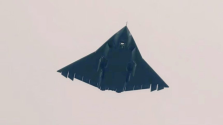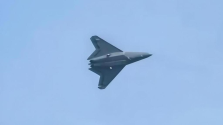Weekly Military Review: If the PLAAF Trains World-Class Air Forces, What Tier Does It Belong To?
After two relatively calm days, Pakistan launched "Operation Bunyan Marsoos" against India on May 10, employing long-range rocket artillery, drones, and other means to strike Indian territory in response to India’s persistent aggression and provocations. The May 7 Indo-Pakistani air battle, which had stunned the world, suddenly seemed like a mere prelude to a "Fourth Indo-Pakistani War." Yet before the world could fully react, the foreign ministers of both nations announced a ceasefire on the afternoon of May 10, temporarily halting this "turn-based conflict."
While commentary struggles to keep pace with the rapidly shifting situation, this military analysis steps back from the fog of war to revisit the undisputed victor of the recent air battle: the Pakistani Air Force (PAF)—a "star student" long trained in joint exercises with China’s People’s Liberation Army Air Force (PLAAF), often mistaken by some as a "junior mentor" due to its boldness and unyielding spirit.
This globally headline-grabbing air battle has propelled the PAF into the ranks of world-class air forces overnight. But what calibre of training produced such a force?
From "Traditional Martial Arts" to "Scientific Doctrine": BVR Weapons ≠ BVR Combat
In the early days of the China-Pakistan "Shaheen" joint exercises, both sides fielded numerous aircraft lacking BVR capabilities (e.g., J-7s, Mirages). Even BVR-capable platforms, such as the JF-17, had limited radar detection ranges, leading most engagements to quickly devolve into within-visual-range (WVR) dogfights. Notably, the PAF developed tactics emphasizing initiative to counter advanced adversaries like the Su-27/30 and J-10A, focusing on "breaking through mid-range to fight at close range." This often drew even the BVR-capable JF-17 into the WVR melee alongside older-generation jets.
Though the PAF operated F-16s, their limited numbers and minimal integration into BVR training with other fleets fostered a perception of BVR combat as flashy but impractical—akin to "traditional martial arts." This changed in April 2016 during the "Falcon-V" exercise at Pakistan’s Rafiqui Air Base, where JF-17s faced an unassuming visitor: the J-8DF.
Though outmatched in dogfights, the J-8DF pilots leveraged their aircraft’s acceleration, climb rate, and radar advantages. By meticulously timing afterburner engagement and radar mode shifts down to the second, they disrupted the PAF’s confidence—honed even against PLAAF third-gen fighters. Even when JF-17s survived to WVR combat, their disadvantaged positioning and pilot psychology hampered performance, resulting in a decisive J-8DF victory.
Five years after the JF-17’s 2011 operational debut, "Shaheen-V" forced PAF pilots to confront that BVR combat wasn’t a simple "point-and-shoot" task but a science requiring mastery of aerodynamics, signal processing, and practical integration. As PLAAF analyses noted: "A few seconds’ delay in afterburner activation or an incorrect radar setting often decides BVR outcomes."
Post-"Shaheen-V," the PLAAF’s new-generation aircraft began limited deployment, coinciding with revised training doctrines that elevated BVR research. Initially aimed at resolving scoring challenges in exercises like "Golden Helmet" and "Red Sword," these studies—bolstered by live-fire data on missile engagement zones, guidance methods, and datalinks—evolved into a standalone scientific discipline, a "doctrine within the doctrine."
In missile optimization alone, BVR research validated optimal strategies for seizing initiative against various threats. It even calculated how to time counter-launches when under attack—forcing adversaries to either break lock, switch to defence, or be struck by later-fired yet better-positioned missiles. Such computations now underpin multiple proven tactics.
Tactics cannot divorce from hardware. With diverse platforms, sensors, and missiles boasting distinct optimal ranges, the PLAAF achieved transformative BVR advancements within years. While the PAF modernized alongside JF-17 inductions—leveraging unique SD-10A (JF-17) and AIM-120C5 (F-16) pairings tested in exercises like "Anatolian Eagle"—limited grasp of underlying principles constrained their progress.
Yet in South Asia, even incremental advancements can prove lethal.


